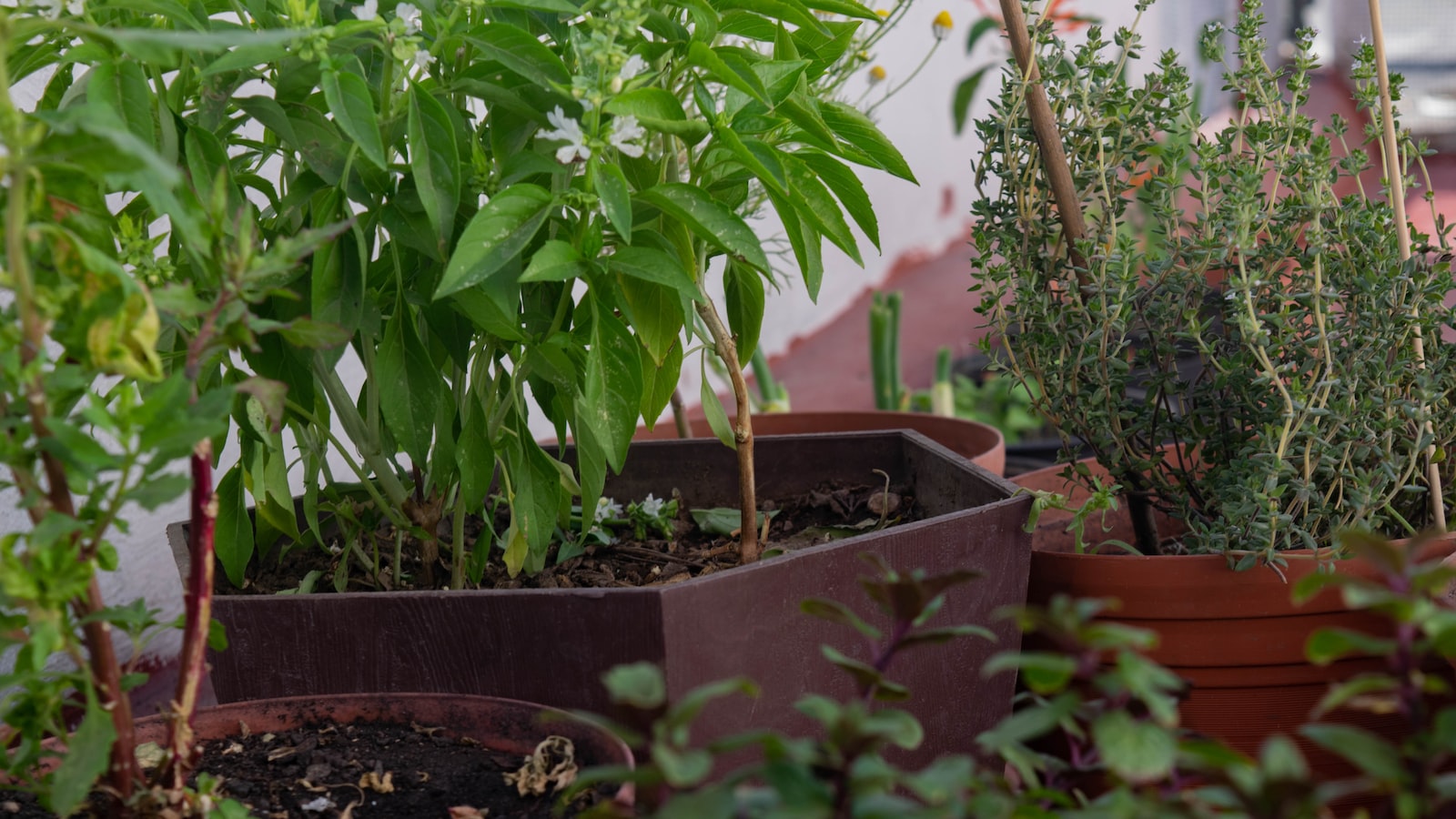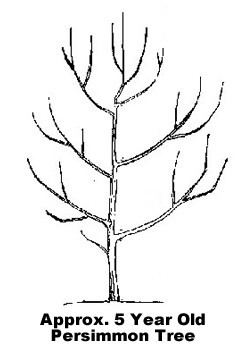Among the many delightful fruits that grace our gardens, the persimmon tree stands tall and proud, bearing its magnificent bounty. With its vibrant orange fruit, resembling miniature suns, a persimmon tree brings unmatched beauty to any landscape. But what lies beneath its majestic allure is an art that few masters – the art of pruning. If you wish to embark on a journey of horticultural mastery and enhance the health and productivity of your persimmon tree, then join us as we dive headfirst into the intricate world of trimming a persimmon tree. Grab your pruning shears, put on your gardening gloves, and let us unveil the secrets of shaping these arboreal wonders to full perfection.
Choosing the Right Time to Trim your Persimmon Tree
Trimming your persimmon tree is an essential task to keep it healthy and productive. However, choosing the right time to trim is crucial to ensure the best results. Proper pruning not only promotes new growth but also removes dead or diseased branches, improving air circulation and allowing sunlight to reach the inner parts of the tree. Whether you are a seasoned gardener or a beginner, these tips will guide you through the process of trimming your persimmon tree.
1. Early Spring: Consider pruning your persimmon tree in early spring, just before the dormant buds begin to swell. This is the best time to shape the tree and remove any dead or damaged branches. Avoid trimming too early, as winter frost can still harm fresh pruning wounds.
- Technique: Use clean, sharp pruning shears to make clean cuts at a slight angle, just above a bud or branch collar.
- Safety First: Wear gloves and protective eyewear while pruning to avoid injuries.
- Proper Pruning: Remove any crossing branches or those growing towards the center of the tree to improve air circulation and sunlight penetration.
- Consider Professional Help: If you are unsure or need assistance, it’s always a good idea to consult with a professional arborist.
- Avoid Over Pruning: Remember not to remove more than 20% of the tree’s canopy at once, as excessive pruning can stress the tree and reduce fruit production.
- Regular Inspection: Throughout the year, inspect your persimmon tree for any signs of disease or pest infestation. Promptly prune affected branches to prevent further damage.
By following these guidelines and understanding the proper timing for trimming your persimmon tree, you can promote its overall health and maximize fruit production. Remember to always be cautious and consult professionals when needed. Happy pruning!

Pruning Techniques to Promote Healthy Growth and Fruit Production
When it comes to maintaining the health and fruitfulness of your persimmon tree, employing proper pruning techniques is essential. Pruning not only shapes the tree and enhances its aesthetic appeal but also stimulates healthy growth and maximizes fruit production. By following these expert tips and techniques, you can ensure that your persimmon tree thrives and provides a bountiful harvest year after year.
To start, identify any damaged, dead, or diseased branches, which can hinder the overall growth of the tree. Remove these unwanted branches first to promote better airflow and reduce the risk of pests or diseases. Additionally, thinning out overcrowded branches allows more sunlight to reach the inner parts of the tree, ensuring better nutrient distribution and improving the chances of fruit development. Be sure to use clean, sterilized pruning tools to prevent the spread of disease.
| Features/Tips | Description |
|---|---|
| Timing | Prune your persimmon tree during late winter or early spring while it is dormant to avoid disrupting active growth. |
| Selective Pruning | Focus on removing branches that are crossing, rubbing, or growing vertically; retain those growing outward in a balanced manner. |
| Heading Back | Head back long, vigorous branches to a desired length to encourage new lateral growth and maintain a manageable tree height. |

Expert Tips for Maintaining an Ideal Shape and Size for your Persimmon Tree
In order to maintain an ideal shape and size for your persimmon tree, proper trimming is crucial. Trimming not only helps maintain the tree’s overall health, but also promotes better fruit production. Here are some expert tips to ensure that your persimmon tree stays in optimal condition:
1. Timing is everything: Pruning should be done during the dormant season, typically in late winter or early spring. Avoid trimming during the summer months, as it can disrupt the tree’s growth and potentially damage the fruit-bearing branches.
2. Remove dead or diseased branches: Regularly inspect your persimmon tree for any dead or diseased branches. These should be promptly removed to prevent the spread of diseases and to encourage new growth. Make clean cuts just above the branch collar, ensuring the tree’s natural healing process is not disrupted.
| Features | Tips |
| Pruning Tools | Invest in high-quality tools such as pruning shears and loppers to make clean and precise cuts. |
| Thinning Out | Thinning out crowded branches allows better air circulation and sunlight exposure, leading to healthier and more productive trees. |
| Top-Working Technique | Consider utilizing the top-working technique to encourage grafting new varieties onto your existing persimmon tree. |

Regular Maintenance Pruning to Enhance the Longevity of your Persimmon Tree
Regular maintenance pruning is an essential step in enhancing the longevity and overall health of your beloved persimmon tree. Pruning not only improves the tree’s appearance but also encourages proper growth, increases fruit production, and prevents the occurrence of diseases or pests. In this post, we will guide you through the process of trimming a persimmon tree, ensuring that you perform this task with professionalism and care.
When it comes to trimming your persimmon tree, there are a few key features and tips to keep in mind. Firstly, start by removing any dead, damaged, or diseased branches. These can negatively impact the tree’s growth and may act as an entry point for pests or pathogens. Secondly, thin out crowded areas to increase air circulation and light penetration. This will result in healthier branches and more vigorous fruiting. Additionally, it’s crucial to maintain a balanced form by selectively trimming branches that cross or rub against each other. Lastly, don’t forget to disinfect your tools before and after each cut to prevent the spread of diseases.
| Features | Tips |
|---|---|
| Proper Branch Removal | Disinfect Tools |
| Remove dead, damaged, or diseased branches. | Disinfect tools with a solution of bleach and water. |
| Improved Air Circulation | Maintain Balanced Form |
| Thin out crowded areas for better airflow. | Trim branches that cross or rub against each other. |
Frequently Asked Questions
Q: Can I give my persimmon tree a trendy new haircut?
A: While a new ‘do may work for you, persimmon trees prefer a more traditional form of pruning to thrive.
Q: How do I coax my persimmon tree into revealing its best shape?
A: Persimmons, like artists, appreciate a little shaping. Begin by removing any crossed branches, encouraging a strong central leader, and promoting proper sunlight penetration.
Q: Can I break out the styling tools and go to town on my persimmon tree?
A: Put those scissors away! Only use clean, sharp pruning shears to make precise cuts, removing dead or diseased wood, and thinning out excessive growth. Your persimmon tree deserves a gentle touch, not a wild makeover. As the sun begins to bid a gentle farewell, we conclude our journey through the enchanting realms of Persimmon tree trimming. We have embarked on an odyssey that sought to unveil the secrets behind nurturing these majestic beings, and we hope you found it ever so enlightening.
Now armed with the knowledge bestowed upon you, may your hands be imbued with the skill of an ancient craftsman as you carefully prune and shape your persimmon tree, transforming it into a living masterpiece. Remember, each slice of the blade is a gesture of utmost love and care, written on the canvas of nature’s tapestry.
As we part ways, let us not forget the profound connection we share with these silent guardians of our gardens. For within their gnarled branches lies a silent orchestra of life, orchestrating melodies of fruit, shade, and tranquility for all who seek solace beneath their embracing embrace.
May your persimmon tree flourish under your watchful eye, a testament to your devotion and unwavering diligence. Embrace the seasons that come and go, for they hold the key to unlocking nature’s mysteries and delivering abundant harvests to your very doorstep.
So, go forth, dear gardener, armed with the scissors of wisdom, the pruners of understanding, and the knowledge bestowed upon you. May your persimmon tree stand tall, its branches reaching for infinite skies, as a testament to a shared journey through time and space.
With that, we bid you adieu, as you embark on your own personal path of persimmon tree trimming. May it be a sublime experience that fills your heart with joy, and your baskets with nature’s gifts. Let the legacy of your actions be written in the annals of horticultural lore, a shining example of the artistry that lies within our hands.
Farewell, dear reader, and may your persimmon tree forever be a beacon of natural wonder in your garden oasis.
- When to Put Weed and Feed on Lawn in Michigan - October 16, 2023
- When to Fertilize Potatoes Plants - October 16, 2023
- Can You Plant Clover in the Spring - October 16, 2023
Contents
- 1 Choosing the Right Time to Trim your Persimmon Tree
- 2 Pruning Techniques to Promote Healthy Growth and Fruit Production
- 3 Expert Tips for Maintaining an Ideal Shape and Size for your Persimmon Tree
- 4 Regular Maintenance Pruning to Enhance the Longevity of your Persimmon Tree
- 5 Frequently Asked Questions

